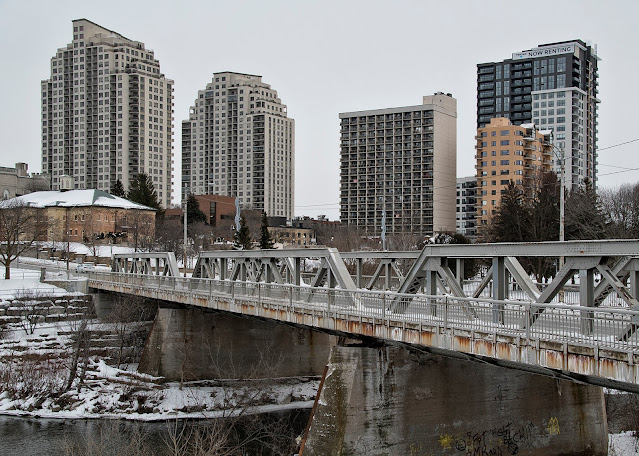When Karen and I were living in Toronto in the 1980s, a great kerfuffle arose over a much-derided piece of public art erected at University Ave. and Dundas St. in 1984. Designed by the artist Oscar Nemon, it was supposed to be a memorial to RCAF airmen who lost their lives in World War II. It depicted a stylized human figure with arms outstretched above its head, an airplane or bird - or possibly a birdlike airplane - between its hands. The official title was Per Ardua ad Astra, Latin for "through adversity to the stars," the motto of the RAF.
 |
| Gumby Goes to Heaven |
The general consensus was that it was an awful piece of art. Wags christened it "Gumby Goes to Heaven" because the human figure somewhat resembled the figures in a series of goofy Claymation cartoons: two-dimensional-looking with stick-man simplicity of features. The first Gumby cartoon was a student film project in the early 1950s. It became a meme before there were memes - as did Gumby Goes To Heaven for that matter.
The humour of the nickname for the Nemon sculpture was possibly intensified by association with a series of Monty Python skits about apparently brain-damaged working class blokes in rubber Wellington boots, rolled up trousers, sweater vests and handkerchiefs tied on their heads - also called Gumby. Or maybe I'm the only one who made that connection.
 |
| Michael Palin and John Cleese in The Gumby Brain Specialist: "It'll have to come out." |
In any case, given the abiding hatred Torontonians had, and still have, for Gumby Goes to Heaven, my question is this: how could the powers-that-be here in Londonville have approved the not dissimilar-looking piece of public art that sits now in a parkette near the Forks of the Thames. Like Gumby, it's a tall abstracted human figure with an appearance of two-dimensionality. (The powers-that-be in this case is an organization called the London Arts Council.)
 |
| The Sentinel by Gino Lorcini |
Although The Sentinel only appeared in its present location in 2016, the stylistic similarities with Gumby Goes to Heaven make sense when you understand that it was actually made at about the same time as the Nemon work. It was unveiled in 1986, after being commissioned by Blackburn's widow following his death. It stood for years at the Commissioner's Road location of what is now the local CTV affiliate, but was then CFPL TV, the CBC affiliate owned by the Blackburns. (The call letters stood for Canada Free Press London.)
I'm not sure I hate The Sentinel. It's certainly not as egregious as Gumby Goes to Heaven. Still, it does have an unfortunate echo of that sculpture, and it seems a slap in the face to ordinary citizens who simply don't get "modern" art.
I'm intrigued by the deliberations that must have taken place when the gift of the statue was accepted by the city and it was decided to put it in such a prominent location. Did nobody look at it then and say, 'It looks a bit like Gumby Goes to Heaven, doesn't it?' And if so, would that not have been enough to put a kybosh on the thing? And if not...well, never mind.
*
I go by The Sentinel fairly often on my runs and walks. Today on my afternoon walk, with camera, I just happened to notice and think about it again. The walk took me up to the Wharncliffe St. bridge and back along the north side of the west branch, which is where The Sentinel stands. I didn't have as many unusual and interesting subjects today, but here are a few snaps.
 |
| Kensington Bridge from the Queen St. bridge |








No comments:
Post a Comment